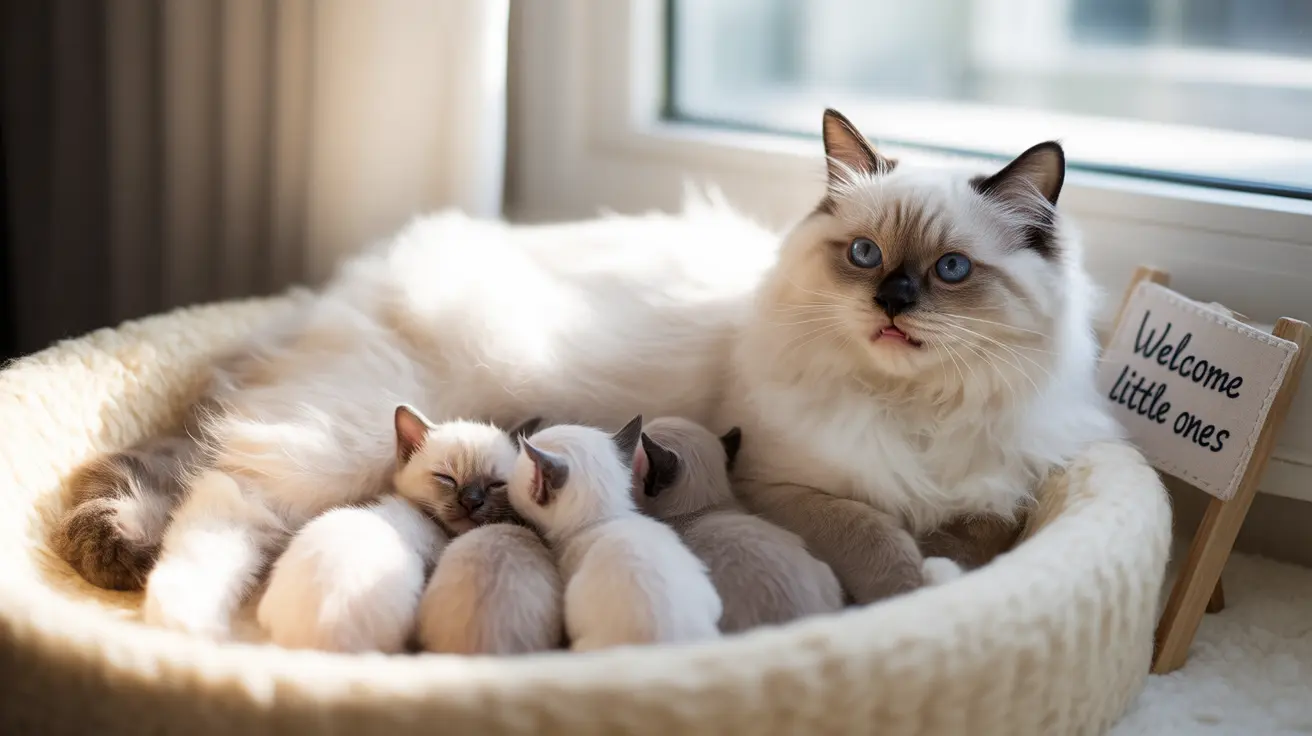When your cat starts panting after giving birth, it's natural to feel concerned. While panting can be a normal part of the post-birth recovery process, it's essential to understand when this behavior signals a need for veterinary attention. This comprehensive guide will help you distinguish between normal post-birth panting and potentially dangerous complications.
As a cat owner, recognizing the difference between typical labor recovery and warning signs can be crucial for your cat's health and her kittens' well-being. Let's explore the various causes of post-birth panting and learn when to seek professional help.
Normal Post-Birth Panting: What to Expect
Immediately after giving birth, it's common for cats to exhibit some degree of panting. This natural response typically occurs due to physical exertion and the continued process of uterine contractions. Most cats will show signs of:
- Mild to moderate panting during and shortly after delivery
- Gradual decrease in panting intensity as they rest
- Normal interaction with their kittens
- Regular breathing patterns between panting episodes
Warning Signs: When Panting Becomes Concerning
While some panting is expected, certain symptoms warrant immediate veterinary attention. Watch for panting accompanied by:
- Persistent heavy breathing that doesn't improve with rest
- Disinterest in or aggression toward kittens
- Abnormal vaginal discharge or bleeding
- Signs of pain or distress
- Inability to settle or rest comfortably
Common Causes of Post-Birth Panting
Physical Recovery and Exhaustion
Labor is an intensely physical process, and many cats will pant as their bodies recover from the experience. This type of panting typically resolves within a few hours as the mother cat rests and regains her strength.
Temperature Regulation
New mother cats may pant to regulate their body temperature, especially if their nesting area is too warm. Ensure the birthing area is kept at a comfortable temperature, around 72°F (22°C), with good ventilation.
Stress and Anxiety
The transition to motherhood can be stressful, particularly for first-time mothers. Anxiety-related panting may occur as they adjust to their new responsibilities and the presence of kittens.
Serious Medical Conditions to Consider
Eclampsia (Milk Fever)
This dangerous condition occurs when nursing depletes calcium levels and can develop within weeks of giving birth. Symptoms include:
- Intense panting
- Muscle tremors
- Disorientation
- Inability to walk properly
- Seizures in severe cases
Retained Placenta or Kittens
If your cat continues panting heavily after what appears to be the end of labor, she may have retained a kitten or placental tissue. This requires immediate veterinary intervention to prevent serious complications.
Creating an Optimal Recovery Environment
To support your cat's post-birth recovery and minimize stress-related panting:
- Provide a quiet, private space away from household traffic
- Maintain appropriate room temperature and ventilation
- Ensure easy access to fresh water and food
- Monitor mother and kittens without hovering
- Keep other pets away from the nursing area
Frequently Asked Questions
Why is my cat panting after giving birth, and when should I be concerned?
Panting immediately after birth is normal due to exertion and recovery. However, if panting persists beyond a few hours or is accompanied by other concerning symptoms like lethargy or fever, contact your veterinarian immediately.
What are the signs of eclampsia in a mother cat, and how does it relate to panting?
Eclampsia symptoms include excessive panting, muscle tremors, restlessness, and difficulty walking. This serious condition requires emergency veterinary care as it can be life-threatening if untreated.
How can I tell the difference between normal postpartum panting and dangerous complications in my cat?
Normal panting should decrease with rest and not interfere with maternal care. Concerning panting persists, worsens, or occurs with other symptoms like fever, discharge, or behavioral changes.
What environmental factors can cause panting in a cat after giving birth, and how can I help her stay comfortable?
High temperatures, stress, and overcrowding can cause panting. Maintain a cool, quiet environment with good ventilation, and ensure the mother has a private space for nursing.
When should I contact a veterinarian if my cat continues panting or shows other symptoms after labor?
Contact a veterinarian immediately if panting continues beyond several hours post-birth, or if you notice additional symptoms like fever, abnormal discharge, or changes in maternal behavior.
Conclusion
While some panting after giving birth is normal, being able to recognize concerning symptoms is crucial for your cat's health. Monitor your cat closely during the first few days after birth, and don't hesitate to contact your veterinarian if you notice any worrying signs. With proper care and attention, most mother cats will recover smoothly from the birthing process and successfully care for their new kittens.






